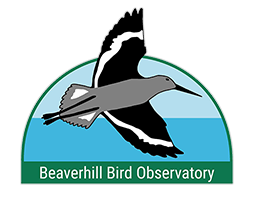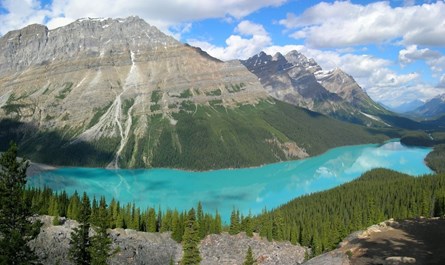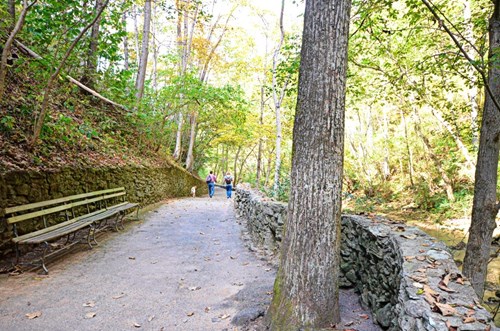Ladder to Extinction
Friday, February 16, 2018What is a niche?
All animals occupy what we call a niche in their environment. A niche is like a place that they fit in; namely the food that they eat and the habitat that they live in on a small scale. In healthy ecosystems, there are many species and for the most part their niches do not overlap substantially. This allows them to avoid competition with other species for food and a place to live. On a larger scale, niches result in animals using different habitats and occupying a certain range, or area, on the landscape. For example, a bison lives on the plains (niche), and will not cross the Rocky Mountains to find suitable habitat on the other side (range).
What’s the problem then?
Sometimes arguments are presented that as climate changes, animals will move along with the climate that is ideal for them, and will continue to prosper. This is logical; animals are mobile, especially birds. But what happens when animals run out of space to move to?
Our world is full of diverse species that are adapted to many environments. Some of those species are adapted to the extreme conditions at various elevations on mountain slopes or at the icy poles. As climate warms, some birds may shift their ranges north, or up mountain slopes as the area they normally occupy becomes too warm. But what happens to the species at the top of the mountain, or at the North and South poles? They can no longer follow their ideal temperatures. This phenomenon is sometimes called a “Ladder to Extinction.” Once a species reaches the top of the mountain, or the furthest north point of land, they cannot go any further. They remain in habitat that is increasingly too warm for them, with decreasing reproduction and survival, and increasing competition from new species moving in who are better adapted to those temperatures. This is already happening; one study looked at a wide range of creatures in different niches found that movement was an average of 16.9 km northwards per decade, or 11 meters in elevation per decade. Other studies have already found that species richness is declining at the tops of mountains.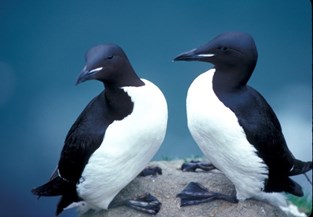
Consider the case of Brünnich’s Guillemot, also known as the Thick-billed Murre. This arctic seabird is a circumpolar species that nests in the cold arctic in summer, typically in island colonies and/or cliffs. In recent years, the combination of increased temperatures and subsequently increased number of mosquitoes early in spring is causing these seabirds to abandon their nests, or even die. As the climate warms, mosquitos hatch earlier, and can become major or even lethal pests during the time that birds must remain on their nest to successfully incubate their eggs. The mosquitoes suck the incubating Murre’s blood until they must leave the nest or die of blood loss.
To complicate the effects of changing climate on birds’ ranges, their food sources and habitat may not be able to move fast enough to keep up with them. Plants often take a much longer time to reproduce and reach maturity. Some insects may need certain plants to eat, and may also not be able to spread north until their hosts do. Bird species may depend on certain plant or insect species to flourish, and if these cannot move with the climate, neither can the birds.
What can I do?
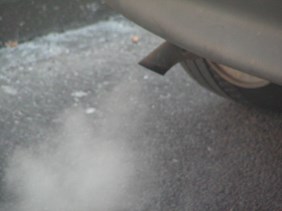 Drive less, or not at all. This is one of the most effective solutions for reducing your carbon footprint, and therefore slowing climate change. Driving less is effective because it promotes efficient transit and high density cities. More than half the Earth’s population live in cities, so reducing the number of vehicles is feasible and effective. One of the benefits that can come from living in cities is a reduced footprint on the environment; taking a bus uses less carbon than if each individual drove. If you were to not drive at all, you could reduce your carbon footprint by 50%.
Drive less, or not at all. This is one of the most effective solutions for reducing your carbon footprint, and therefore slowing climate change. Driving less is effective because it promotes efficient transit and high density cities. More than half the Earth’s population live in cities, so reducing the number of vehicles is feasible and effective. One of the benefits that can come from living in cities is a reduced footprint on the environment; taking a bus uses less carbon than if each individual drove. If you were to not drive at all, you could reduce your carbon footprint by 50%.
Public transit is one way to reduce your carbon footprint, but walking is even better! There are extensive benefits to alternative transport to cars even if you are not specifically concerned about the environment. A public transit pass or a bike is much cheaper than paying for gas, parking, and insurance. Walking can help you reduce obesity; the best way to do this is incorporate it into your daily routine. It is lifestyle differences that can make the biggest difference for climate and birds – go for it!
Photo Credit
By Tobias Alt, Tobi 87 - Own work, GFDL, https://commons.wikimedia.org/w/index.php?curid=3064142
By Sowls, Art - U.S. Fish and Wildlife Service [Public domain], via Wikimedia Commons
By vastateparksstaff - https://www.flickr.com/photos/vastateparksstaff/33027969141/, CC BY 2.0, https://commons.wikimedia.org/w/index.php?curid=57481516
By Jensbn~commonswiki assumed (based on copyright claims). [Public domain], via Wikimedia Commons
Canadian Rockies by m01229 from USA. 29 August 2016. https://commons.wikimedia.org/wiki/File:Canadian_Rockies_(28966768414).jpg
Additional Reading:
Chen, C., Hill, J. K., Ohlemüller, R., Roy, D. B., and Thomas, C. D. 2011. Rapid Range Shifts of Species Associated with High Levels of Climate Warming. Science, 19(333): 1024-1026. DOI: 10.1126/science.1206432
Gaston, A. J., Hipfner, J. M., and Campbell, D. 2002. Heat and mosquitoes cause breeding failures and adult mortality in an Arctic-nesting seabird. Ibis, 144: 185–191. doi:10.1046/j.1474-919X.2002.00038.x
IPCC, 2014: Climate Change 2014: Synthesis Report. Contribution of Working Groups I, II and III to the Fifth Assessment Report of the Intergovernmental Panel on Climate Change [Core Writing Team, R.K. Pachauri and L.A. Meyer (eds.)]. IPCC, Geneva, Switzerland, 151 pp.
Scheffers, B., and Watson, J. 2016. Climate change affecting all life on Earth. EarthSky. http://earthsky.org/earth/climate-change-impact-genes-life-on-earth-species
Tingley, M. W., and Beissinger, S. R. 2013. Cryptic loss of montane avian richness and high community turnover over 100 years. Ecology, 94: 598–609. doi:10.1890/12-0928.1
Wynes, S., and Nicholas, K. A. 2017. The climate mitigation gap: education and government recommendations miss the most effective individual actions. IOP Science 12(7) Retrieved on November 15 from http://iopscience.iop.org/article/10.1088/1748-9326/aa7541/meta
Blog Posts
- What is Climate Change
- Drought: What Can We Do?
- Migration and Climate Change; a Complicated Relationship (Part 1)
- Migration and Climate Change; a Complicated Relationship (Part 2)
- Climate Change and Birds’ Resources
- Ladder to Extinction
- Arctic Warming and Ecosystem Impacts
- Climate Change Connection to Mountain Pine Beetle
- Tackling Climate Change Denialism
- Impact of Climate Change on Bluebirds
- An Introduction to Climate Change
- Great Decline of Aerial Insectivores
- Role of Oceans in Fighting Climate Change
- Role Of Forests In Fighting Climate Change
- Impact of Climate Change on Shorebirds
- Impact of Hurricanes and Climate Change on Birds
- An Introduction to Climate Change.
- Impact of Forest Fires, and Climate Change on the Nature
- Impacts of Climate Change on Owls
- Impacts of Climate Change on Birds of Prey
- Whitebark Pine and Clark's Nutcracker
- COVID 19 & The Environment
- Impact of Global Warming on Bird Anatomy and Colour Polymorphism
- Climate Change & West Nile Virus
- All Posts
